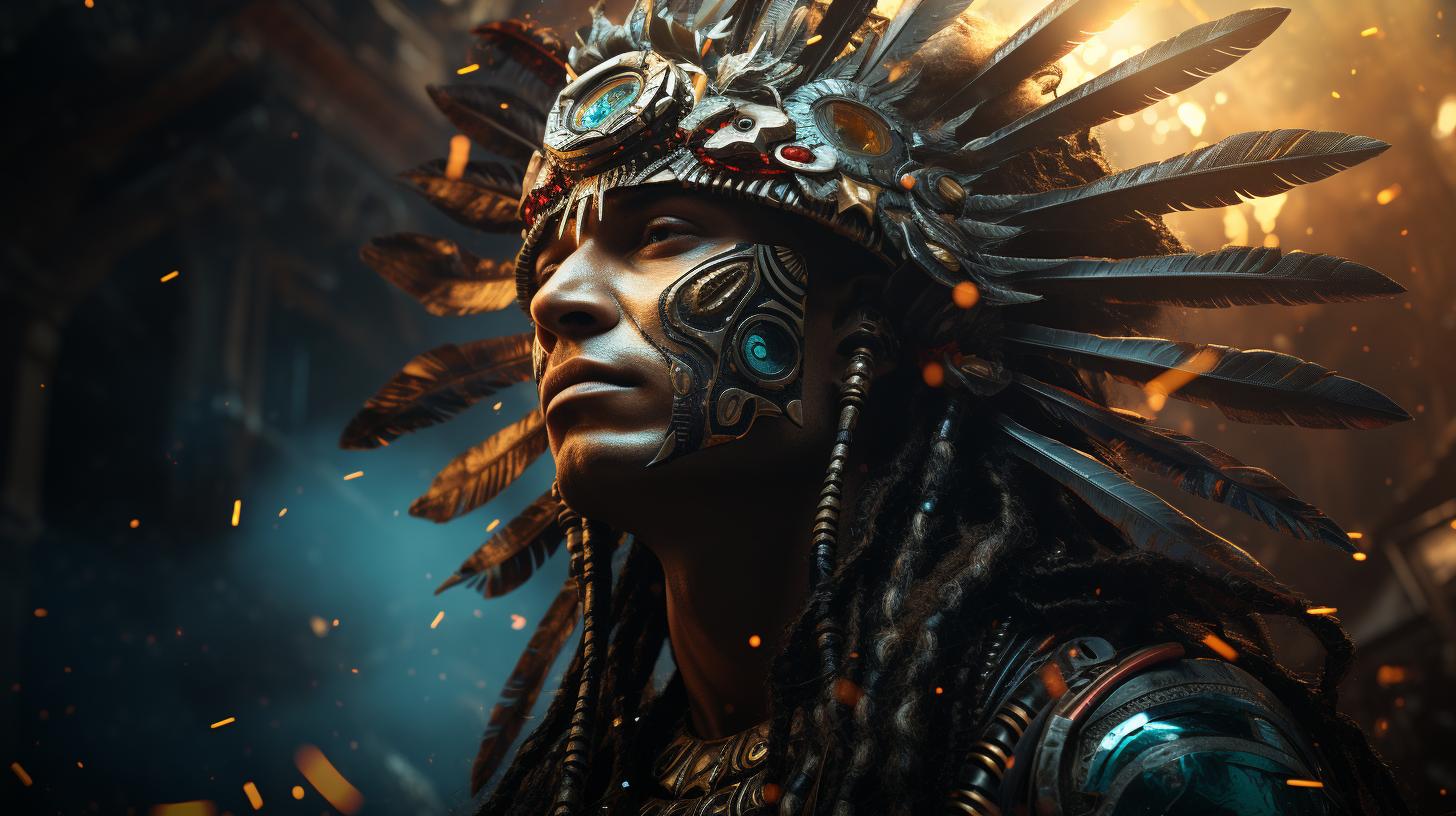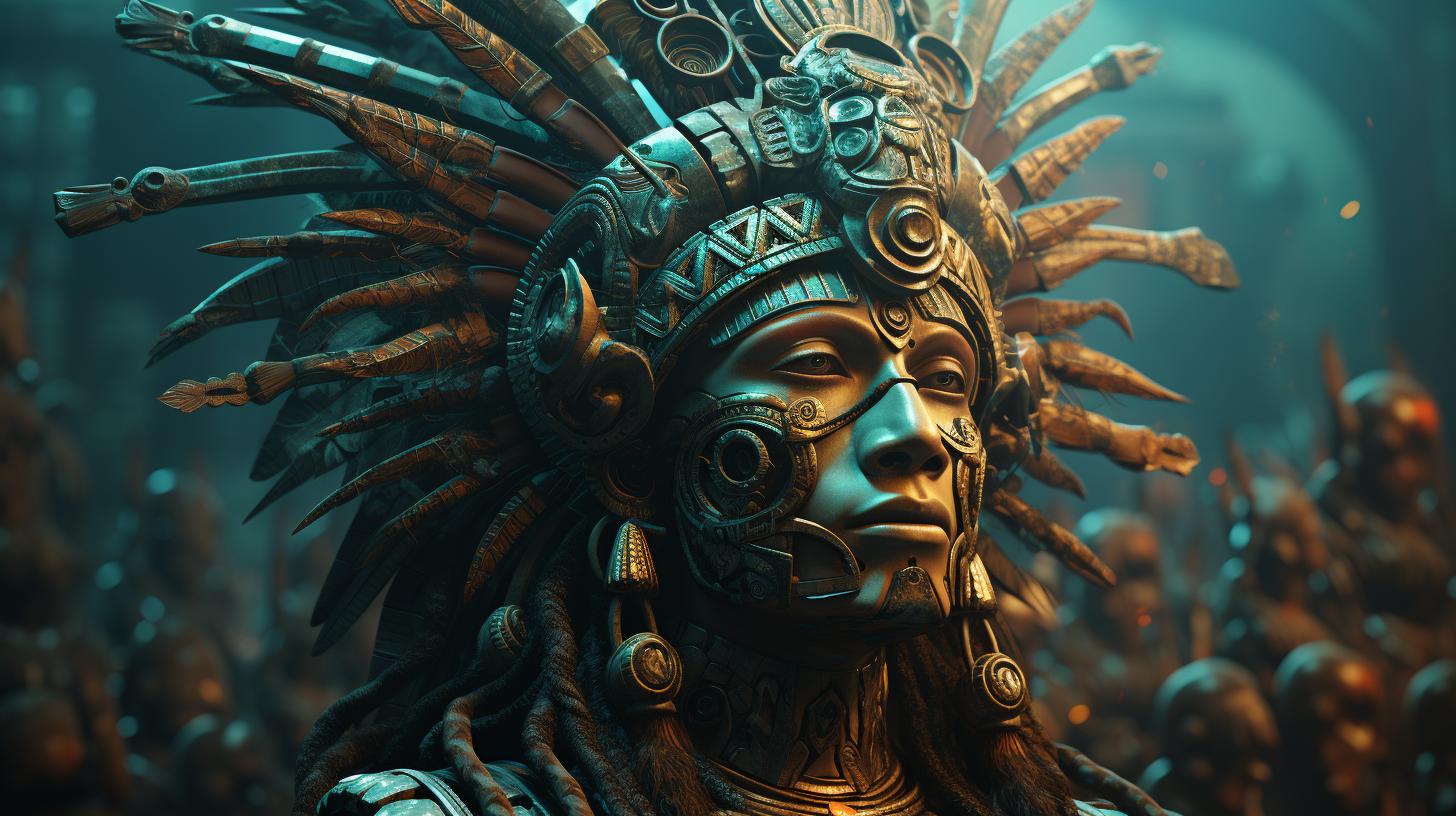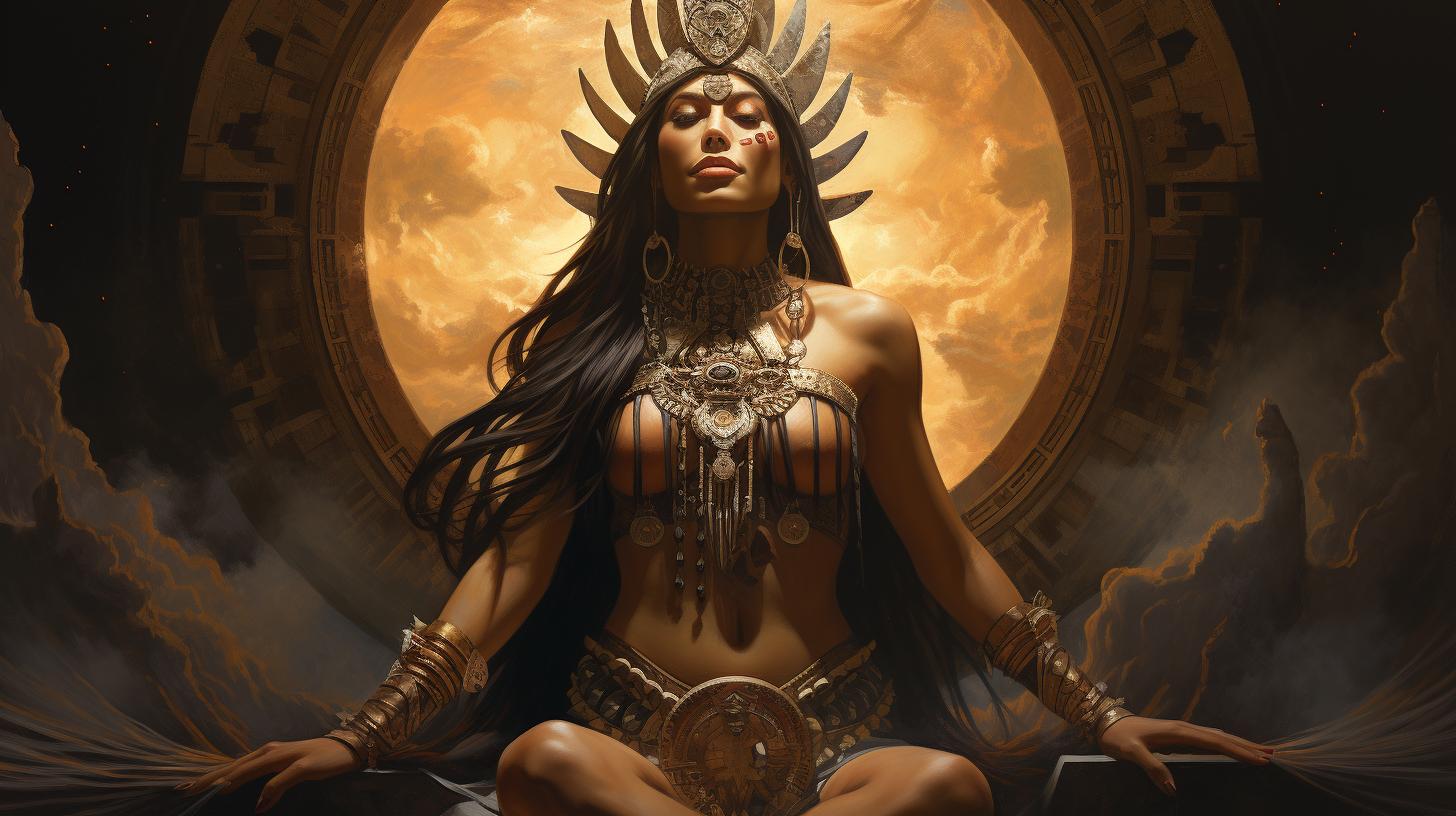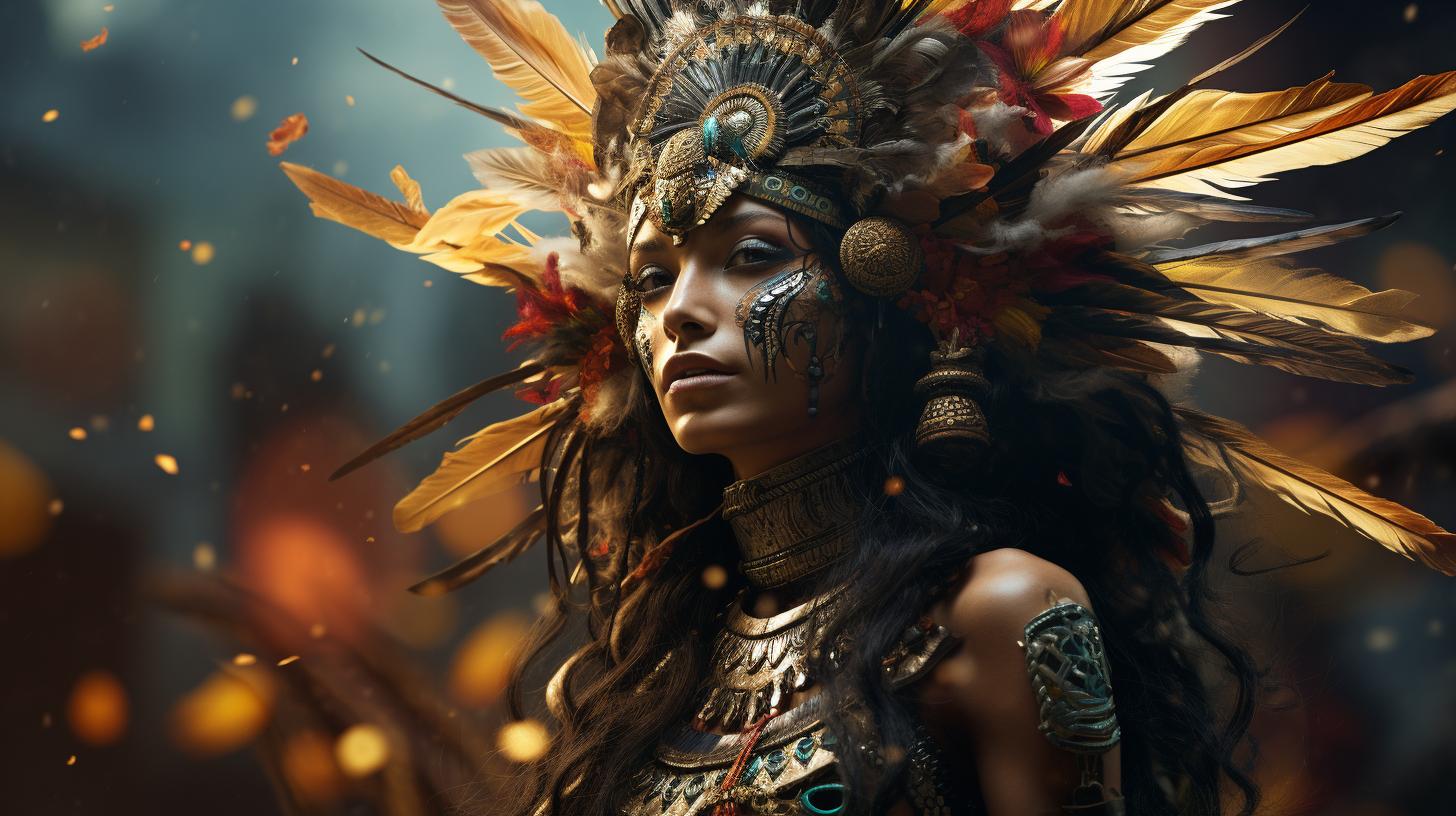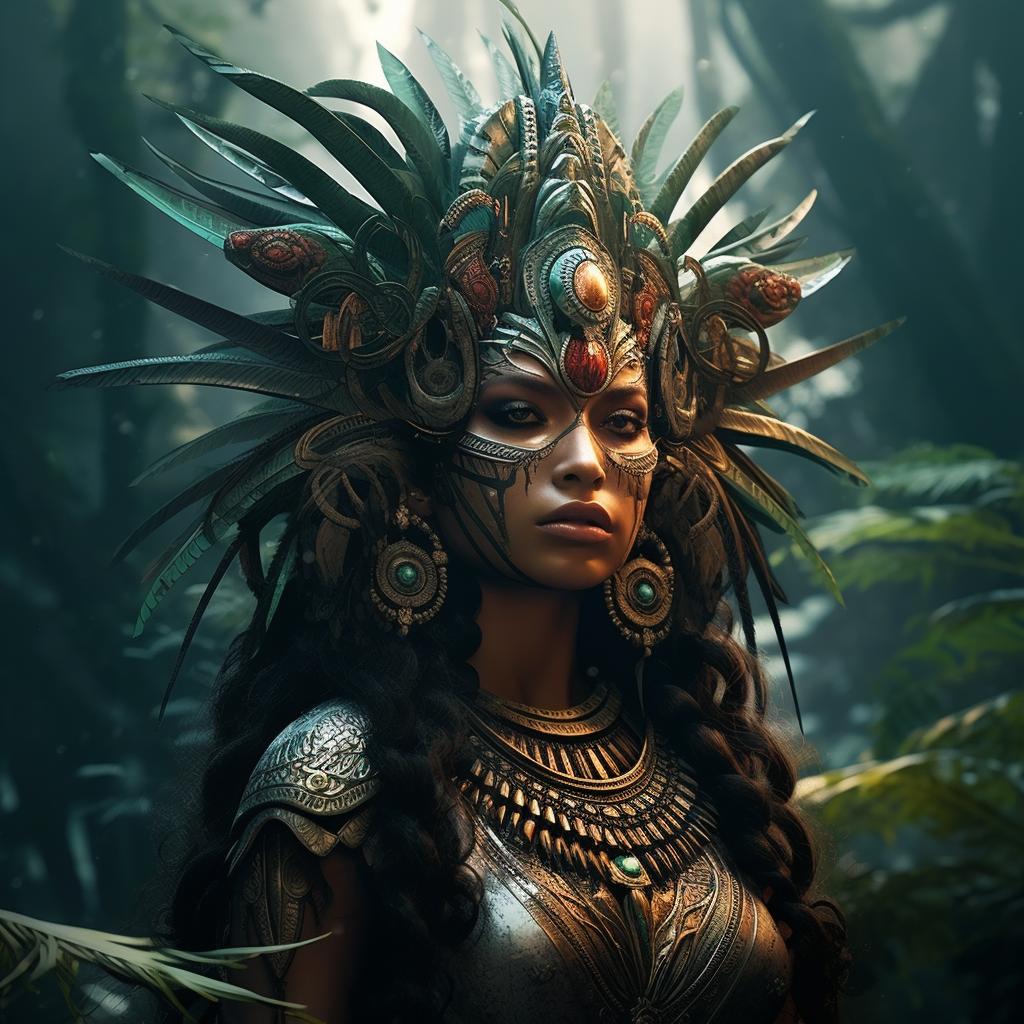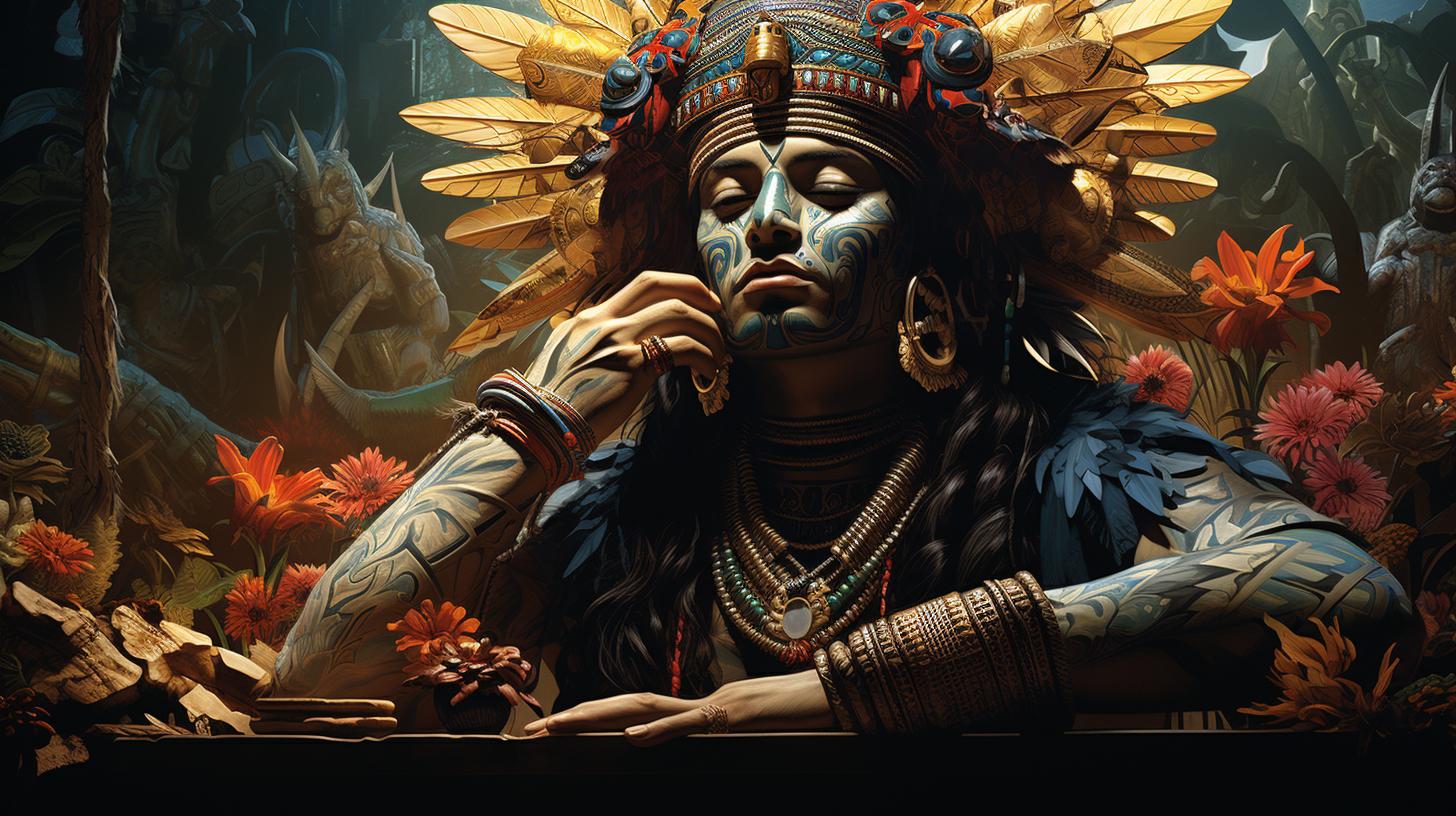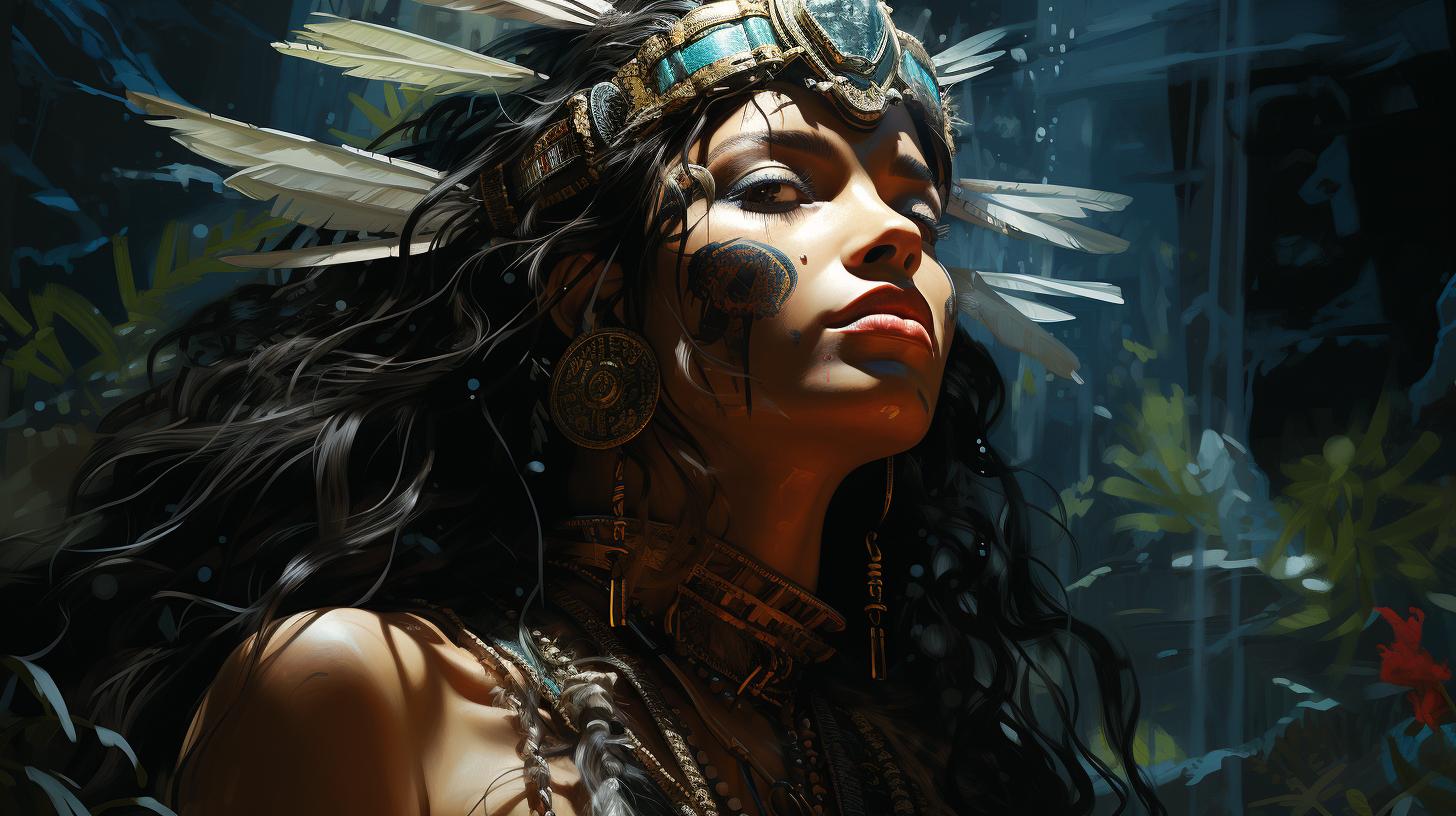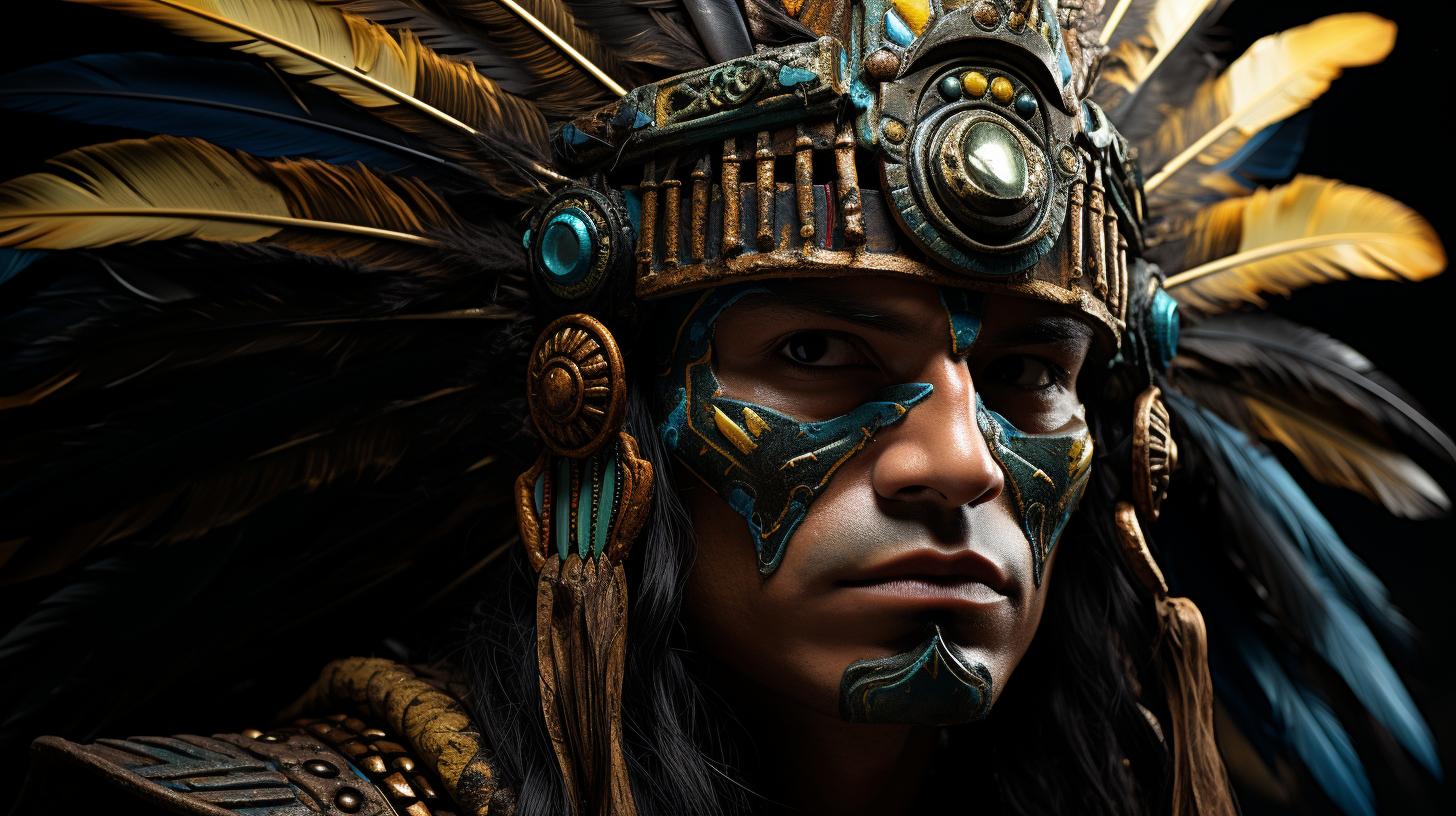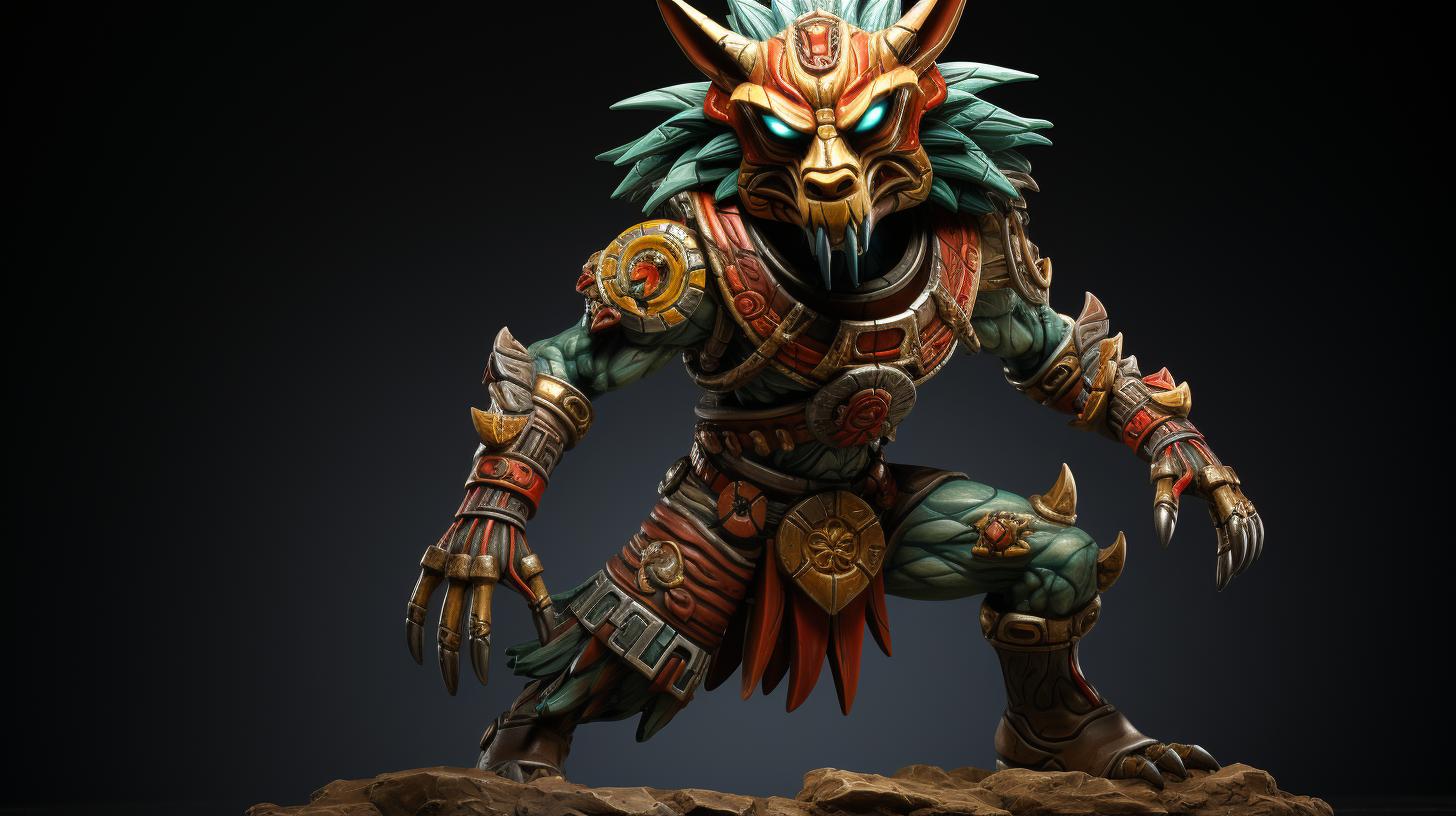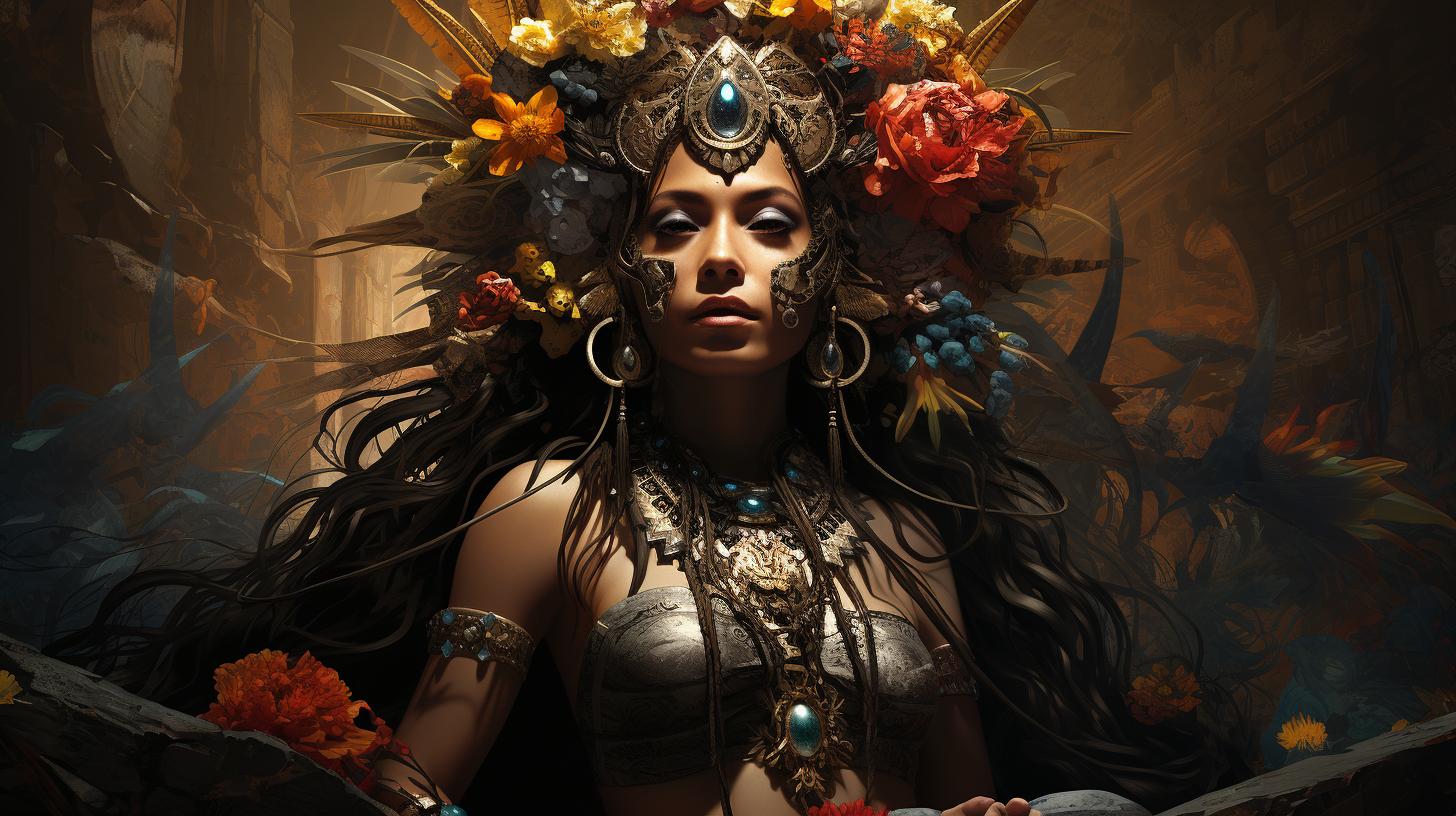Exploring the Cultural Significance of Aztec God Xochipilli: Exploring Love, Fertility, and Pleasure
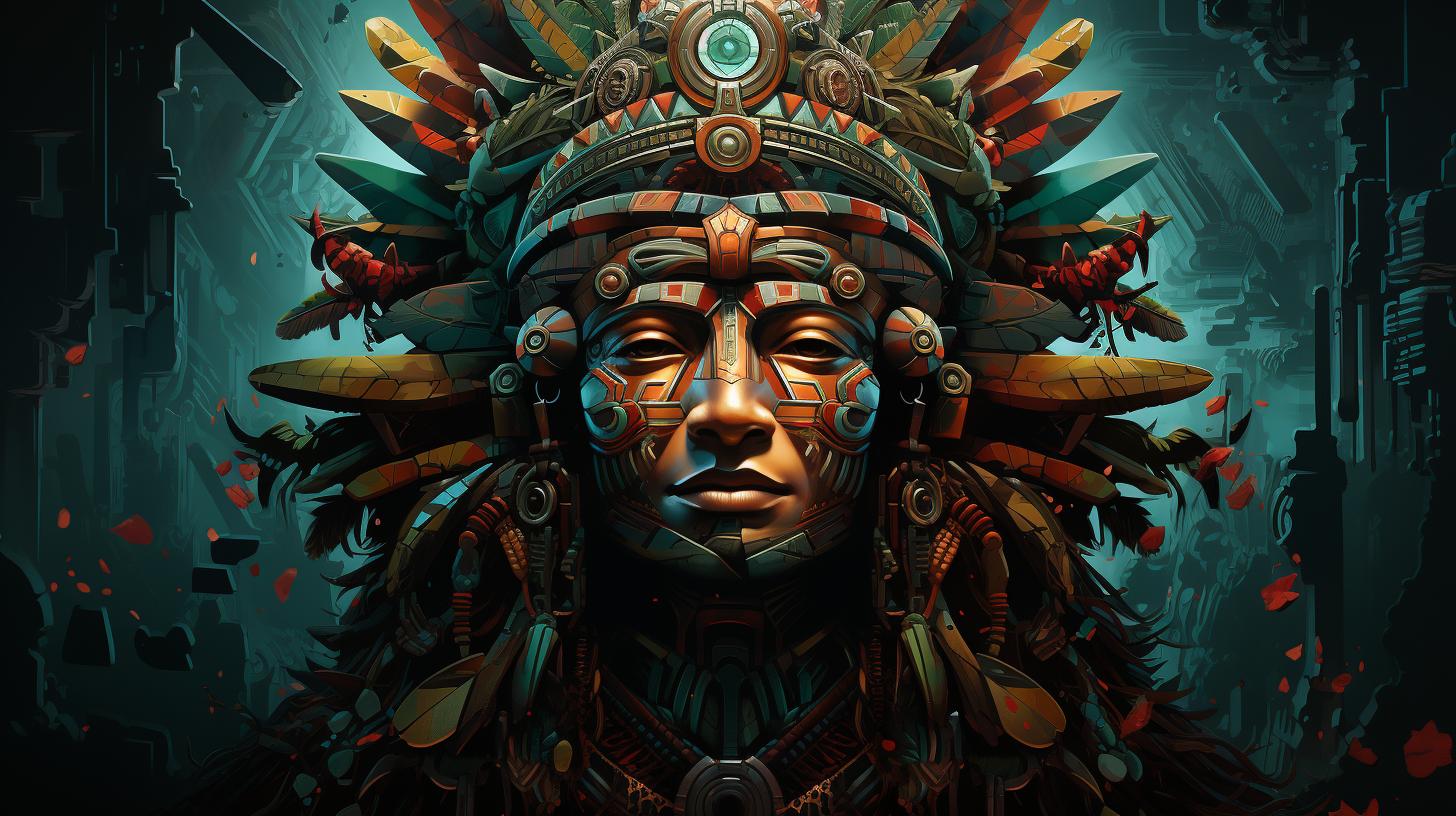
Aztec god Xochipilli holds a significant place in Aztec mythology, representing love, fertility, and pleasure. This deity, also known as the ‘Príncipe de las Flores de Maíz’, is associated with summer, flowers, dance, and creativity.
Xochipilli’s influence extends to festivals, where the consumption of pulque is customary. The famous statue of Xochipilli, adorned with flowers, butterflies, and musical instruments, offers a glimpse into the deity’s significance.
Xochipilli’s connections with other gods and goddesses, his role in ceremonies, and his relevance in modern times highlight his enduring legacy.
Overview of Aztec God Xochipilli
Aztec god Xochipilli holds a significant place in Aztec mythology, embodying various aspects of nature, pleasure, and spirituality. As the ‘Príncipe de las Flores de Maíz’, Xochipilli’s domain encompasses the beauty of summer, the magic of flowers, and the enchanting world of love and pleasure.
Xochipilli’s Associations and Attributes: Revered as one of the Ahuiateteo, gods of excess, Xochipilli’s realm extends beyond mere mortal desires. This divine figure is closely associated with dance, painting, creativity, and festivities.
Xochipilli is also deeply connected to the souls, fertility, and the abundance of nature, symbolizing the interconnectedness of life.
Xochipilli’s Connections to Love, Fertility, and Pleasure: Within the Aztec pantheon, Xochipilli stands as a patron of love and pleasure. His existence intertwines with the essence of passion, serving as a symbol of romantic affection, sensual delight, and the intoxicating joys of intimate connections.
Additionally, Xochipilli is believed to bestow fertility upon those who seek it, overseeing the procreation of new life and the growth of abundance.
Xochipilli’s Relationships with Other Gods and Goddesses: Xochipilli’s divine presence intersects with the realms of other deities, most notably his two brothers, Ixtlilton and Macuilxóchitl, who embody health, medicine, dance, and games, respectively.
Xochipilli’s feminine counterpart, Xochiquetzal, personifies love, fertility, and beauty, creating a harmonious balance within the Aztec cosmology. These divine relationships highlight the multiple dimensions of existence that Xochipilli governs.
The Role of Xochipilli in Aztec Mythology
Xochipilli played a significant role in Aztec mythology and was considered a prominent deity associated with various aspects of life and spirituality. This section explores Xochipilli’s associations, connections to love, fertility, and pleasure, as well as his relationships with other gods and goddesses.
Xochipilli’s Associations and Attributes
Xochipilli was known for his diverse range of associations and attributes that encompassed different domains of Aztec life. He was revered as the deity of summer, flowers, dance, and creativity. Xochipilli’s essence represented pleasure, joy, and indulgence.
Additionally, he was associated with the souls of the deceased and played a role in matters of fertility, love, and artistry.
Xochipilli’s Connections to Love, Fertility, and Pleasure
The worship of Xochipilli was deeply intertwined with concepts of love, fertility, and pleasure within Aztec culture. As the god of love, Xochipilli was often invoked to seek blessings in romantic relationships, marriages, and matters of the heart.
He was believed to bring abundance and prosperity to those who honored him through offerings and devotions.
In terms of fertility, Xochipilli held great significance in the agricultural practices of the Aztecs. As the enchanter of flowers and plants, he was believed to bestow blessings upon crops and ensure a bountiful harvest.
Xochipilli symbolized the fecundity and life-giving powers of nature, inspiring reverence and gratitude.
Moreover, Xochipilli presided over the realm of pleasure and indulgence. He was associated with celebratory festivities, music, dance, and the enjoyment of earthly delights. The Aztecs believed that through honoring and appeasing Xochipilli, they could attain spiritual ecstasy and find joy in their everyday lives.
Xochipilli’s Relationships with Other Gods and Goddesses
Xochipilli had significant connections and relationships with other gods and goddesses in the Aztec pantheon. One of his notable companions was Xochiquetzal, the goddess of love, fertility, and beauty. Together, they formed a divine duality that symbolized the union of masculine and feminine energies, representing the balance and harmony in the world.
Additionally, Xochipilli had two brothers who played important roles in Aztec mythology. Ixtlilton, the god of health, medicine, and healing, shared a special bond with Xochipilli, as both deities were associated with the wellness and vitality of the Aztec people.
Macuilxóchitl, the god of dance, games, and pleasure, was another sibling of Xochipilli who shared similar thematic domains and enjoyed considerable veneration.
The relationships between these deities manifested a complex interplay of mythological narratives and symbolic connections, highlighting the rich tapestry of beliefs and traditions within Aztec mythology.
Symbols and Representations of Xochipilli
Xochipilli, the Aztec god associated with pleasure, love, and fertility, is symbolically represented through various artistic depictions and symbols. These representations offer profound insights into the significance and reverence of this deity within Aztec mythology.
The Famous Statue of Xochipilli
One prominent representation of Xochipilli is the famous statue discovered near Tlalmanalco, Mexico, now housed in the National Museum of Anthropology. The statue showcases Xochipilli seated on a platform adorned with butterflies, flowers, and clusters of dots representing the sun.
It is a magnificent portrayal of the deity in a state of revelry, singing and playing his sonajeros, traditional rattles.
Depictions of Xochipilli in Art and Codices
Besides the statue, Xochipilli’s imagery can also be found in various Aztec art and codices. Through meticulous illustrations and intricate details, artists depicted him with vibrant colors, often surrounded by flowers and butterflies, symbolizing his associations with beauty and nature.
These depictions highlight the god’s prominent role within Aztec culture, capturing the essence of his divine attributes.
Furthermore, Xochipilli’s iconography in codices often portrays him engaged in joyous activities, including dancing, playing musical instruments, and indulging in feasts. These images serve as visual representations of his role as the patron of dance, music, and joyous celebration within the Aztec community.
- The statue of Xochipilli showcases him playing sonajeros and surrounded by butterflies and flowers.
- Artistic depictions of Xochipilli in codices capture his role in music, dance, and celebrations.
These symbols and artistic representations provide compelling insights into the cultural significance and reverence accorded to Xochipilli, shedding light on the Aztec understanding of love, pleasure, and fertility.
Xochipilli’s Influence on Culture and Ceremonies
Xochipilli, the Aztec god associated with love, fertility, and pleasure, holds a significant influence on the rich cultural traditions and ceremonies of the Aztec people. This section explores various aspects of Xochipilli’s influence, including festivals and offerings, his connection to music and dance, and his impact on homosexuality and gender.
Xochipilli Festivals and Offerings
Throughout the year, vibrant festivals dedicated to Xochipilli take place, celebrating his divine attributes and encouraging communal festivities. These events provide an opportunity for the Aztec community to come together and honor the god through various offerings.
- Colorful flowers: As flowers symbolize beauty and abundance, they are a common offering made to Xochipilli during festivals. The vibrant hues of blossoms evoke the joyful spirit associated with the god.
- Pulque: A traditional alcoholic beverage made from the fermented sap of the maguey plant, pulque is widely consumed during Xochipilli festivals.
It serves as a libation to honor the god and enhance the celebratory atmosphere.
- Mariposas (butterflies): Revered as the iconic representation of transformation and freedom, mariposas hold a special significance in Xochipilli’s ceremonies.
They are released as symbolic gestures, carrying prayers and wishes from the devotees to the god.
- Maíz (corn): As a staple food in Aztec culture, corn plays a vital role in Xochipilli’s offerings.
It represents fertility and sustenance, symbolizing the life-giving blessings bestowed by the god.
Xochipilli’s Connection to Music and Dance
Xochipilli’s influence extends beyond fertility and pleasure. He is intricately connected to music and dance, which form an integral part of Aztec rituals and ceremonies.
- Musical instruments: Various instruments, such as drums, rattles, and flutes, are used in Xochipilli’s ceremonies to create enchanting melodies. The rhythmic beats and melodious tunes invoke a sense of spiritual connection and evoke the god’s presence.
- Dance performances: Dance serves as a powerful expression of devotion to Xochipilli.
Elaborate choreographies, characterized by graceful movements and vibrant costumes, captivate the participants and audience alike. Through dance, the worshippers seek to embody the joy and ecstasy associated with the god.
Xochipilli’s Impact on Homosexuality and Gender
Xochipilli’s unique role as the patron of homosexuality is a testament to the broad acceptance and diversity within Aztec society, challenging contemporary notions of gender and sexuality.
- Acceptance of homosexuality: Xochipilli’s worshippers, including male prostitutes and homosexual individuals, sought his guidance and protection in matters of health and personal relationships. His association with pleasure and love extended beyond traditional gender roles, fostering acceptance and understanding within the Aztec community.
- Exploration of gender: Xochipilli’s influence transcended rigid gender boundaries, and his presence in ceremonies created spaces where individuals could explore and express their authentic selves.
Through artistic performances and rituals, the Aztecs celebrated the fluidity of gender and the beauty of diversity.
Overall, Xochipilli’s profound influence on Aztec culture and ceremonies is reflected in the colorful festivals, musical celebrations, and inclusive attitudes towards sexuality and gender.
Today, his legacy continues to inspire reverence and appreciation, reminding us of the enduring power of love, creativity, and acceptance.
Xochipilli’s Relevance in Modern Times
Xochipilli, the Aztec god associated with love, fertility, and pleasure, continues to hold relevance and captivate the imagination in modern times. Contemporary interpretations and the reverence for Xochipilli showcase the lasting impact of this deity on various aspects of culture and spirituality.
Contemporary Interpretations and Reverence of Xochipilli
In today’s society, there is a growing interest in revisiting ancient belief systems and reconnecting with indigenous traditions. Xochipilli has become a symbol of embracing love, creativity, and the pursuit of pleasure in a balanced and harmonious way.
People find inspiration in Xochipilli’s representation of celebrating life’s joys and expressing oneself freely.
Many individuals and communities have formed spiritual practices rooted in the worship of Xochipilli. Through rituals, meditations, and ceremonies, they seek to reconnect with the god’s energy and harness its positive influence in their lives.
Whether through personal altars or organized gatherings, Xochipilli’s presence continues to be honored and celebrated.
Xochipilli’s Legacy and Cultural Significance
The legacy of Xochipilli extends far beyond his traditional role in Aztec mythology. As a symbol of joy, fertility, and the creative arts, Xochipilli’s influence can be found in various forms of artistic expression, including music, dance, and visual arts.
Furthermore, Xochipilli’s representation has transcended cultural boundaries, inspiring artists, writers, and performers around the world. His image often appears in paintings, sculptures, and contemporary art pieces, serving as a testament to his enduring impact on artistic exploration and cultural diversity.
Reflections on the Continued Worship of Xochipilli
The continued worship of Xochipilli raises intriguing questions about the fluidity and adaptability of ancient belief systems. As devotees explore their spiritual connections with this deity, they consider the relevance of Xochipilli’s teachings in the modern context.
Some reflect on the significance of pleasure and the pursuit of happiness as essential aspects of human experience. Others find solace in Xochipilli’s association with love and fertility, interpreting it as a reminder to embrace and nurture the relationships that bring fulfillment and growth.
By engaging with Xochipilli’s worship and exploring the multifaceted facets of his influence, individuals and communities gain insight into their own identities, desires, and connections to the world.
In conclusion, Xochipilli’s relevance in modern times extends beyond his traditional role as an Aztec god. Contemporary interpretations and the continued worship of Xochipilli demonstrate his enduring impact on art, spirituality, and individual experiences of joy, love, and pleasure.
…

